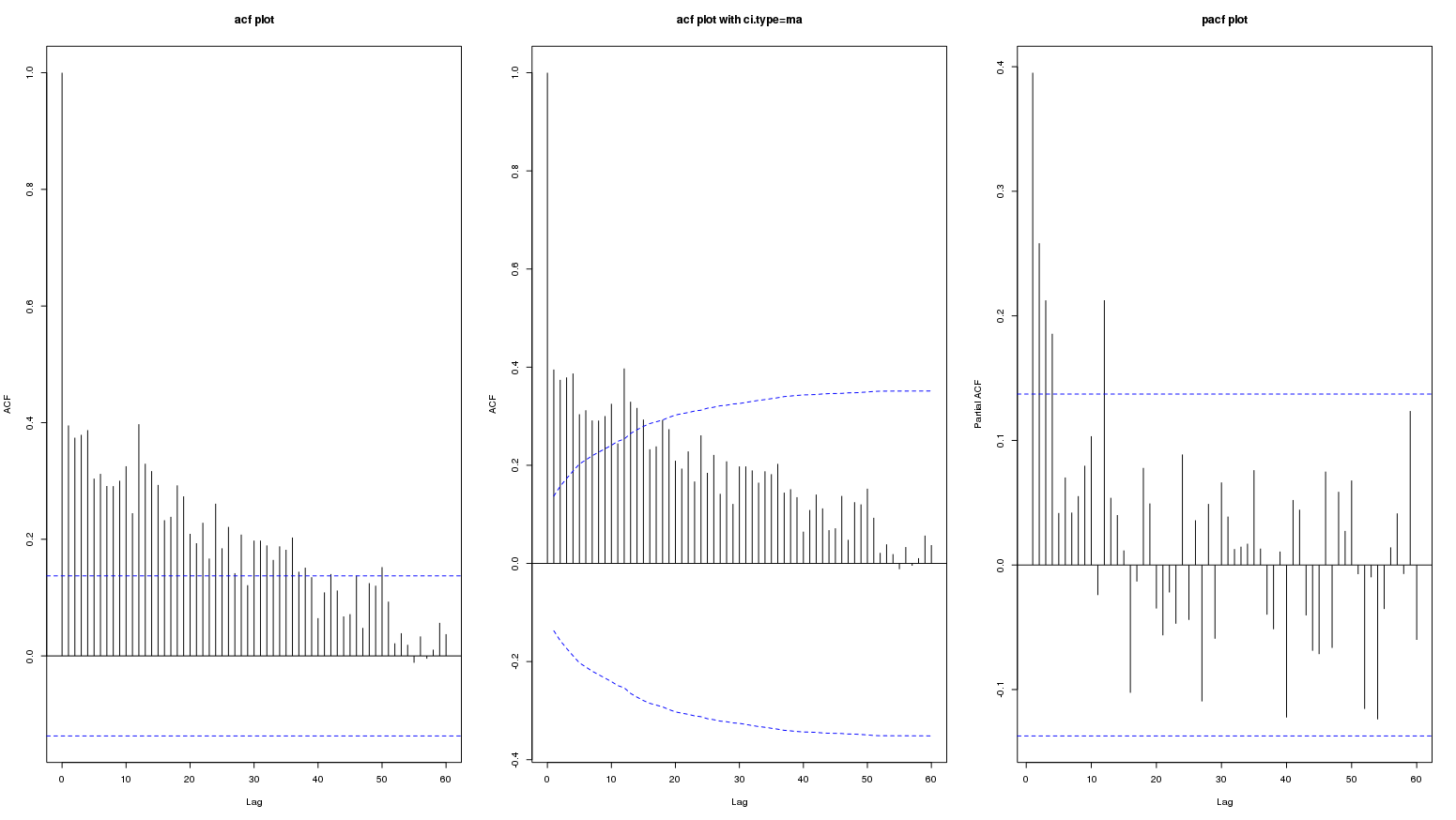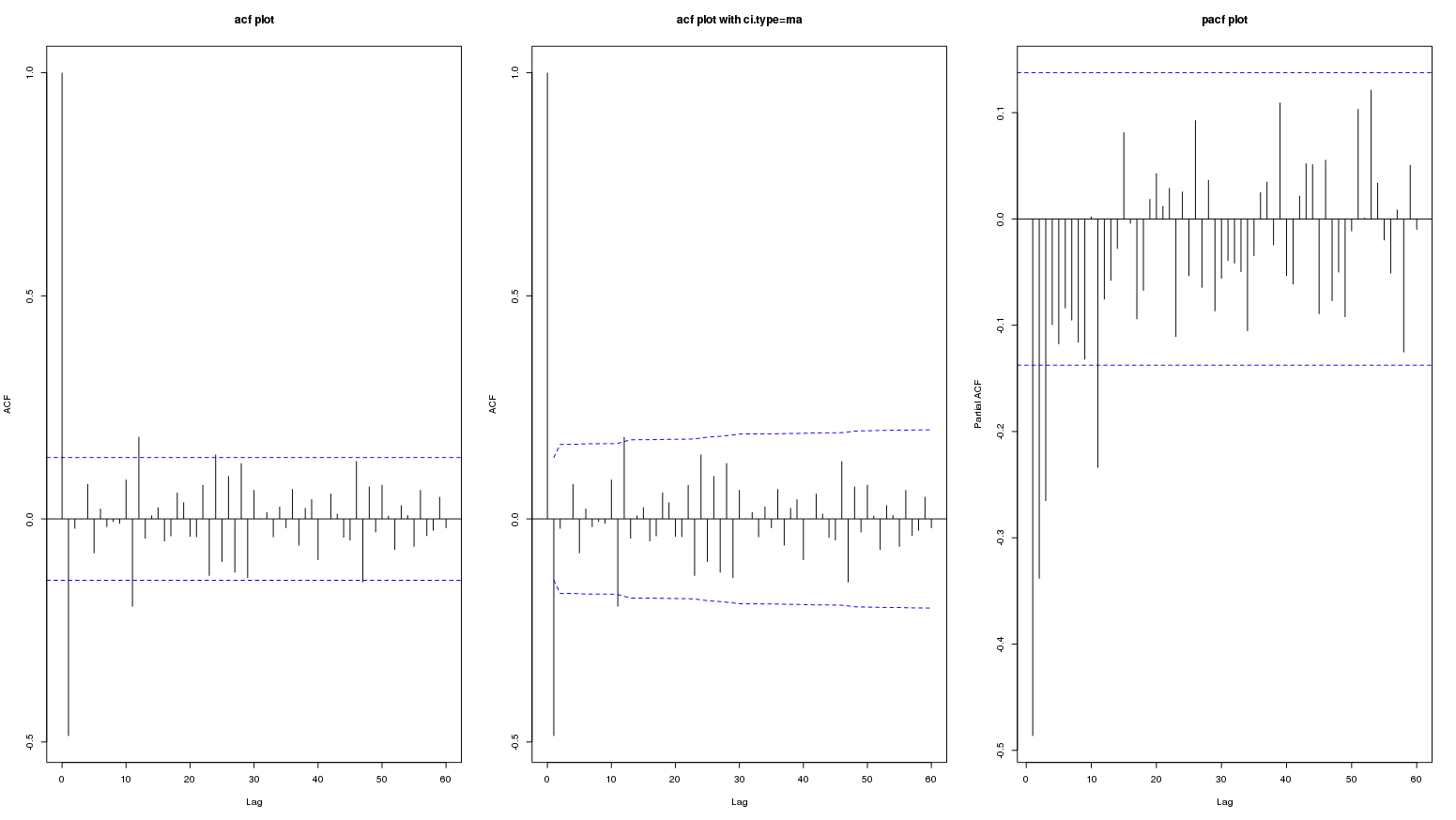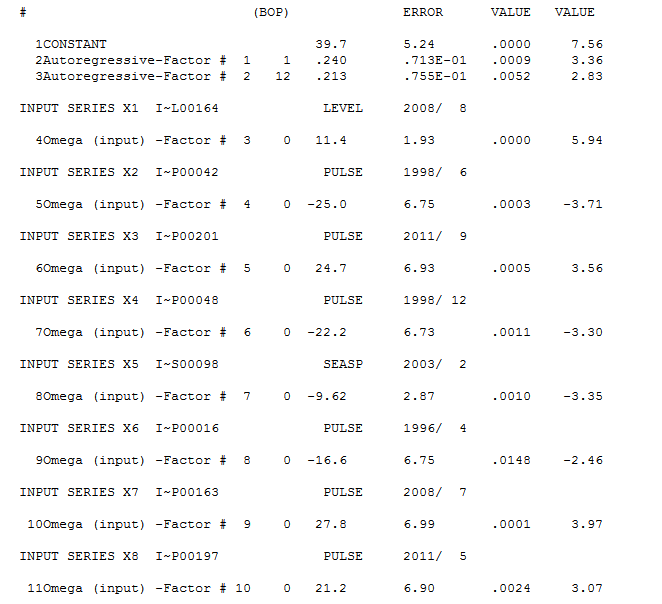Interpretation of the ACF and PACF
The slow decay of the autocorrelation function suggests the data follow a long-memory process. The duration of shocks is relatively persistent and influence the data several observations ahead. This is probably reflected by a
smooth trending pattern in the data.
The ACF and PACF of order 12 are beyond the significance confidence bands. However, this does not necessarily mean the presence of an identifiable seasonal pattern. The ACF and PACF of other seasonal orders (24, 36, 48, 60) are within the confidence bands. From the graphic, it is not possible to conclude whether the significance of the ACF and PACF of order 12 is due to seasonality or transitory fluctuations.
The persistence of the ACF mentioned before suggests that first differences may be needed to render the data stationary. However, the ACF/PACF of the differenced series look suspicious, negative correlation may have been induced by the differencing filter and may not be actually appropriate. See this post for some details.
Determine if seasonality is present
The analysis of the ACF and PACF should be complemented with other tools, for example:
- Spectrum (a view to the ACF in the frequency domain), may reveal the periodicity of cycles that explain most of the variability in the data.
- Fit the basic structural time series model and check if the variance of the seasonal component is close to zero relatively to the other parameters (in R function
stats::StructTS and package stsm).
- Tests for seasonality, based on seasonal dummies, seasonal cycles or those described and implemented in X-12.
- Checking for the presence of pulses and level shifts as mentioned by IrishStat is also necessary since they can distort the conclusions from the previous methods (in R the package tsoutliers can be useful to this end).





 The PACF of the original series
The PACF of the original series  . AUTOBOX
. AUTOBOX  . Diagnostic checking of the residuals from this model suggested some model augmentation using a level shift, pulses and a seasonal pulse Note that the Level Shift is detected at or about period 164 which is nearly identical to an earlier conclusion about period 176 from @forecaster. All roads do not lead to Rome but some can get you close !
. Diagnostic checking of the residuals from this model suggested some model augmentation using a level shift, pulses and a seasonal pulse Note that the Level Shift is detected at or about period 164 which is nearly identical to an earlier conclusion about period 176 from @forecaster. All roads do not lead to Rome but some can get you close !  . Testing for parameter constancy rejected parameter changes over time . Checking for deterministic changes in the error variance concluded that no deterministic changes were detected in the error variance.
. Testing for parameter constancy rejected parameter changes over time . Checking for deterministic changes in the error variance concluded that no deterministic changes were detected in the error variance. . The Box-Cox test for the need for a power transform was positive with the conclusion that a logarithmic transform was necessary.
. The Box-Cox test for the need for a power transform was positive with the conclusion that a logarithmic transform was necessary. . The final model is here
. The final model is here  . The residuals from the final model appear to be free of any autocorrelation
. The residuals from the final model appear to be free of any autocorrelation  . The plot of the final models residuals appears to be free of any Gaussian Violations
. The plot of the final models residuals appears to be free of any Gaussian Violations  . The plot of Actual/Fit/Forecasts is here
. The plot of Actual/Fit/Forecasts is here  with forecasts here
with forecasts here 
stl()? $\endgroup$